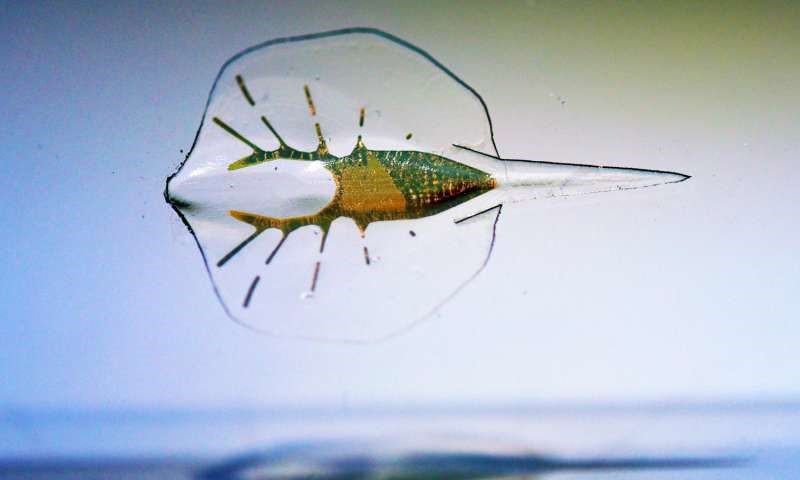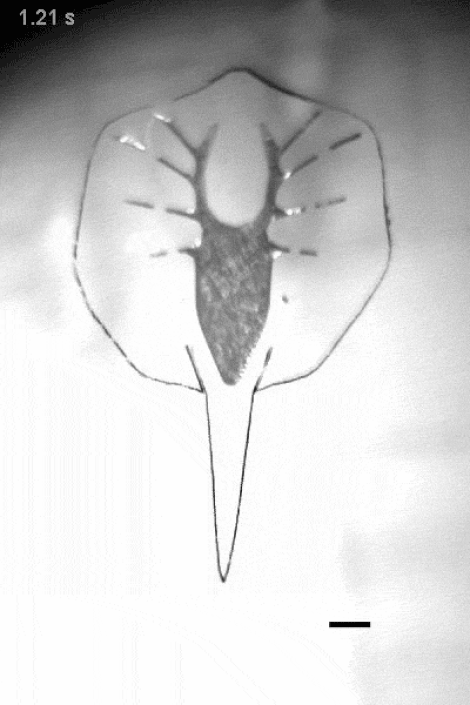
Researchers from Harvard University have built a miniature robotic stingray that straddles the line between organic and synthetic. As a bio-hybrid, the soft robot is fueled by light-activated heart muscle cells embedded into its polymer exterior, which allow it to swim as gracefully as if it were a real stingray. The effect, the scientists believe, could revolutionize future medical devices by establishing the foundation for constructing an artificial heart.
Publishing their findings in the journal Science , the team reveals that the robot is composed of a polymer “skin” wrapped around a neutrally-charged gold skeleton, which is laced with 200,000 cardiomyocyte muscle cells taken from the heart of a rat.
At just 16 millimeters in length and 10 grams in weight, the penny-sized stingray silkily glides through liquid salt and sugar when exposed to light, recreating the up-down-movement of a living ray. Such fluid movement occurs because the cardiomyocyte are photovoltaic and aligned along the top of the robot so that faintest light exposure causes the fins to contract downward. Once the fins reach a certain position, the potential energy building within the golden skeleton is released, and the fins rebound.

The idea behind the robotic stingray originated from bioengineering and applied physics Professor Kit Parker’s daughter, who noted the similarity between the muscles a stingray a uses to propel itself and the muscles used by a human heart. “She was trying to pet a stingray, and she put her hand in the water, and the stingray quickly moved away from her hand in a very elegant way,” Parker told Gizmodo. “It struck me like a thunderbolt that I could build that system in the musculature, and that it would look very much like the [muscular] layer of the heart.”
Leveraging the cardiomyocyte's light-sensitive nature allowed the researchers to implement a light-driven navigation system that manipulates the robot’s movements by shining an asymmetrical light on different parts of the body. Light shined on the left side of the body causes it to steer to the left, while light shined on the right causes it to steer to right; altering the light’s frequency modifies the stingray’s speed. Together, the light-driven navigation system offers enough control to guide the robot through an obstacle course.

The ultimate goal originating from Parker’s four years of research was not so much to create an organic-synthetic-hybrid, as to better understand the heart and how various parts of anatomy can help with the blood flow. “Except crustaceans, almost all marine life forms have muscles designed to move fluid,” said Parker. “To advance our studies of the heart we have started looking at marine life forms and the muscular pumps they represent.” Breakthroughs in the domain could lead to the creation of smaller, faster devices whose cells function as both actuators and sensors. “Living muscle cells are much more energy efficient than synthetic actuators and can be programmed to do cool things,” said Parker.
Advertisement
Learn more about Electronic Products Magazine





